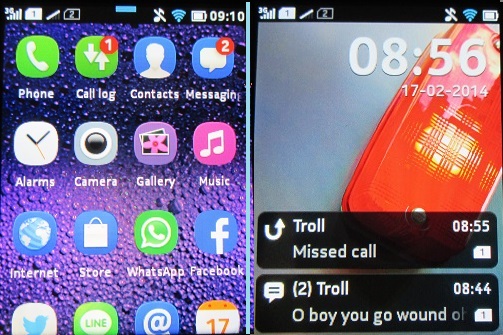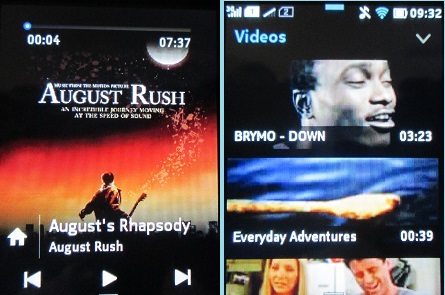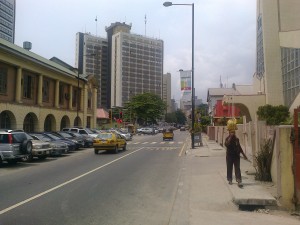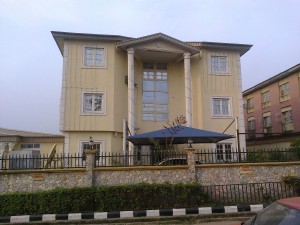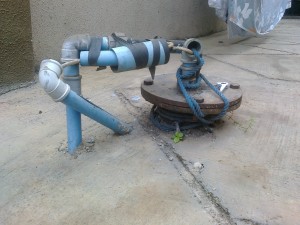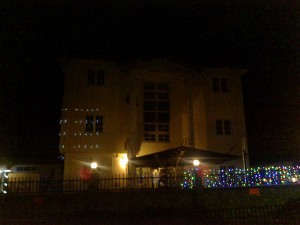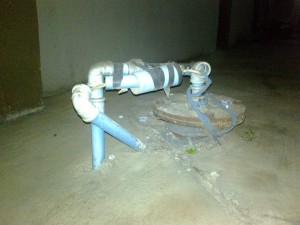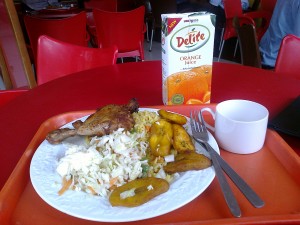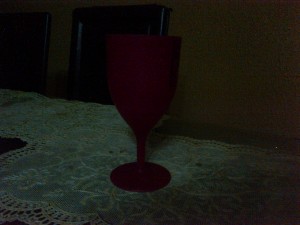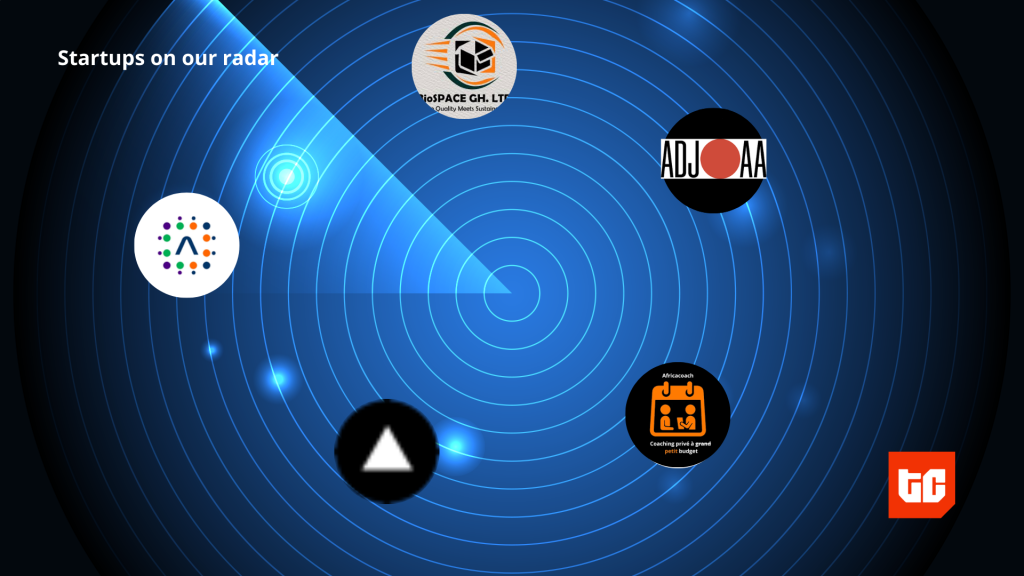I’ve been with the Nokia Asha 503 for the past week and while it has its minor annoyances, I must say I did not expect to have as many good things to say about it as I do.
The Asha 503’s biggest advantage over the other members of the Asha family is that it runs on Asha Software Platform 1.2, exclusively. This has a number of implications, the most important being that it supports 3G (again, exclusively). Other subtle differences include quick access to camera from the lockscreen – by way of an upward swipe – and an option to show/hide highlights of notifications on the lockscreen, among other things.
The good stuff
Easy to use swipe-based UI; impressive battery life; not a data hog; very good keyboard, especially for a sub-4-inch device
The not-so-bearable stuff
No OS-wide copy-and paste support (even though 3rd party apps like WhatsApp and Opera mini have the feature); no true multitasking; secondary SIM inactive when connected to the internet; can’t take screenshots (aka munch).
Skip to…
- Display, body and handling
- Perfomance
- The UI
- Apps and Multimedia
- Connectivity, telephony, messaging and browsing
- Camera quality
- Battery life
- The Verdict
Display, body and handling
Measuring 4.04 inches long and 2.39 wide, the Nokia Asha 503 is a little thicker and longer than its predecessor, the Asha 501. If you’re used to large screen devices, the Asha 503 might feel a little bit weird in the hand initially. It takes some getting used to but eventually you realize it’s quite handy – perfect for one-handed use – thanks to the curved corners at rear of its body. And it’s quite the looker too. Well, the frozen-in-ice design theme looks way cooler on other colours than on the black unit we are reviewing. Finally, the Asha 503 display is reasonably bright for a device in its price range but viewing angles aren’t the best. So don’t rely on it for outdoor use on a very sunny day.
Performance
You can’t really expect much from a single core 1 Ghz, 128 MB RAM device. Like I mentioned earlier in my first impressions post, performance is inconsistently between choppy and passable at best. Most preinstalled apps run fine and navigation is generally seamless but the same can’t be said of all 3rd party installations. Gaming for example is a generally smooth experience but some 3rd party apps like Opera Mini can be a chore to use. Granted, Nokia intended users stick to the default Nokia Express browser (which runs reasonably smooth by the way) but it didn’t cater to all my browsing needs, as I will describe later.
The User Interface
The UI is what I find most interesting about the Asha 503. The swipe-based navigation is super easy to use and surprisingly not the least bit laggy. The keyboard is probably one of the best things about this phone. It’s certainly one of the best stock keyboard I have ever used on a 3-inch phone.
My only gripe with the UI is the absence of copy and paste. That is totally unacceptable in 2014. I mean, even the Nokia Asha 210 has copy and paste on some level.
Navigation
You can achieve most functions by swiping up, down, left or right. It’s that simple: Swipe up on lockscreen for quick access to camera; left or right from lockscreen to unlock phone; right from centre, within camera, to review gallery; left from centre, within camera, to switch to video mode; left or right on lockscreen notifications to unlock and go direct to the appropriate app; left or right from anywhere (lockscreen, app, video player) to close apps and toggle between homescreen and fastlane; and up from within apps, to reveal contextual menu.
The notification centre can also be accessed, from anywhere but the lockscreen, by swiping down from top bezel. There you will find quick settings for toggling connectivity and sound options. There’s also a back button for going back between 2 apps at most. This is about as far as the Asha 503 can go with multitasking. If you ever make the mistake of swiping away to homescreen from within any app that is neither the music player or native browser , you will have to reload the app. You can double tap the screen to wake it up and display the lockscreen (not set by default based on battery life considerations).
Fastlane
Fastlane is primarily a history of your phone activity. It logs everything you do from opened apps, to calls and texts, to music playing, browsing history, everything (you can filter what it logs in phone settings) and all entries are actionable. For example, you can play/pause music (without having to launch the music app), dial recent contact and launch recent apps, all from within Fastlane.
Fastlane kinda reminds me of Android’s multitasking screen. Only that there’s no emphasis on thumbnails, it has social integration and it can tell the future… kinda. You can add future events like upcoming birthdays, to-do lists and the like. You can also make quick posts to your Twitter and Facebook accounts and there’s near-instant viewing of likes and retweets right on the Fastlane… the whole narcissist package.
Apps and Multimedia
Apps
App collection is okay, not inspiring. There’s only so much you can expect from the Asha platform. The standard stock apps – FM Radio, alarm, calculator, file manager and sound recorder – are pretty decent. I particularly love the touch-dial based interface of the alarm clock and radio apps.
Native apps for Facebook, Twitter, Line, WeChat and Whatsapp are also pre-intsalled; more than the average user would probably ever need. Football lovers will be happy to find a native Goal.com app also pre-installed. Nokia Reader, the news reader app, is poor in my opinion. You can only access pre-curated feeds, you can’t add yours. Thankfully, I had Twitter lists to fall back on. The twitter app, by the way, is pretty neat, albeit basic. There’s also an app store (Nokia Store) where you can download 3rd party apps (comes with 60-day pass for selected apps and games). And there are preinstalled trial versions for popular games like Plant vs Zombies, which you can pay for using your airtime balance.
As for browsing needs, I wasn’t too happy with my Nokia Xpress browser experience. It’s actually not a bad browser but it still leaves me wanting more; so I downloaded Opera Mini. Turns out it hasn’t been optimized for the Asha OS platform. So if you’re a power user like me, you either stick to the default browser or you don’t browse the internet at all.
Multimedia
The FM radio app is very easy to use as the interface is touch-dial based. You just place your thumb on a red dot and dial away. Or if you’re feeling a little lazy, just tap arrows for quick scan. You can also save and rename your favourite stations.
The music and video player apps are pretty basic. The video player does not support folders so you have to scroll-to-find. It does support quick sharing though, if that’s of any advantage to you.
I like that the music player was able to play my iTunes collection without having to convert to mp3 or download a 3rd party music player (like is the case on some low-end Android devices). You can filter songs by track, artists and albums. The only snag is that there’s no quick search functionality. Other than that, most of the standard playback functions can be accessed by calling up the contextual menu.
Connectivity, Telephony, Messaging and Browsing
The Asha 503 has Dual micro SIM support (there’s a single SIM variant though). Note the emphasis on micro. Only one SIM can be 3G at a time. You can toggle which SIM you want to connect to the internet with and connection speed from within phone settings, without having to physically switch them. Both SIMs are usually on standby simultaneously, expect when the primary SIM is connected to the internet. That means calls and messages will not come in on the secondary SIM when you’re browsing. So you might want to use your primary line for connecting to the internet. There’s also support for Wi-Fi, should you have access to that.
Browsing
Nokia Xpress is a decent browser. There’s multi-tab and bookmarking support. You can also stream (most) YouTube videos and send shortcuts of your favourite websites to the homescreen for quick access. And of course, Nokia claim up to 90% data compression. The browser will render most pages, especially mobile-optimzed. However, pages heavy with javascript-based elements may not always render properly.
For a power user like myself, I would rate the Asha 503 browsing experience a little below average. But it’s good enough for the regular user.
Calling, phonebook and messaging
By default, every time you make a call, the notification bar will drop down just a little for you to select which SIM you want to make the call with. There’s an option to set defaults for calls and messaging, just as you would for internet access. The phonebook has search functionality and a slightly subtle alphabetical scroller by the right side. There is no online contacts syncing sadly. You can however sync contacts super easily from any device via Bluetooth. There’s also integration for social media contacts. And you can send messages to Facebook and Twitter contacts right from the phonebook.
Call quality is really good. The in-call menu is also very easy to use with its large button-based interface.
Text messaging is threaded (like you would expect anything less) and just like with calling, you can choose between always selecting SIM of choice for sending messages or setting a default.
The email client is pretty standard though, it appears not to render HTML email very well. There’s quick setup support for Gmail, Yahoo and Outlook and other email accounts. Setting up is easy as pie and you can also set a desired polling frequency. You can add new accounts by swiping up for the contextual menu and pushing on the plus button.
Camera quality
The Asha 503’s 5MP camera is passable. It will cover most social media needs, which is what most people will use the phone for anyway. Low light performance is really poor though. Find sample shots below. All photos captured in auto mode.
Outdoors
[Click images for full resolution]
Wide, mid and close range outdoor photos in normal lighting conditions
In low light (with flash)
Indoors
Normal lighting, low lighting with flash and without flash
And here’s a video sample taken by the guys at GSMArena.
Battery Life
I already shared my first impression of the Asha 503’s battery. I carried out one more test on the battery and I am still impressed its performance. Granted, the Asha 503 has a small display and isn’t a performance beast but, I’ve used Android devices with similar display and battery rating that wouldn’t even match the Asha 503 in battery life.
The results:
“Intensive everyday use” rating – this was described in my battery first impression post – at least 9 hours
Endurance rating – brightness at 100%, 3G mobile data always on (with notifications coming in) and video playing with external speakers blaring at full volume – 7 hours. Very impressive for 1200 mAh battery.
Nokia claims talk time of 12 hours over 2G and 4 and a half over 3G. I wasn’t able to put that claim to the test but I’m almost certain it is pretty accurate.
The Verdict
In all, the Nokia Asha 503 is a well-built device. It is, without doubt, currently the best Asha device you will ever use.
However it still falls way short of smartphone classification and hence, I believe it is best suited for the casual user whose needs do not go beyond common functionalities – basic multimedia, social networking and internet browsing. Nokia has all but satisfied that need with the Asha 503, albeit at an unreasonable price, in my opinion. Considering what similarly priced devices on competing platforms are capable of, I can’t justify its 16k price tag.
So if you’re an above average user on a 16k or so budget, and you must go Nokia, I recommend you spare a couple more Nairas and get the Nokia Lumia 520 for an extra 3k. If you however can’t spend beyond 16k, I recommend a solid budget Android device like the Gionee Pioneer P2. It costs less (14k5) and has remarkable build quality and performance for its price range.






